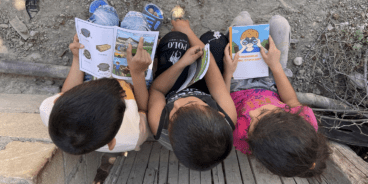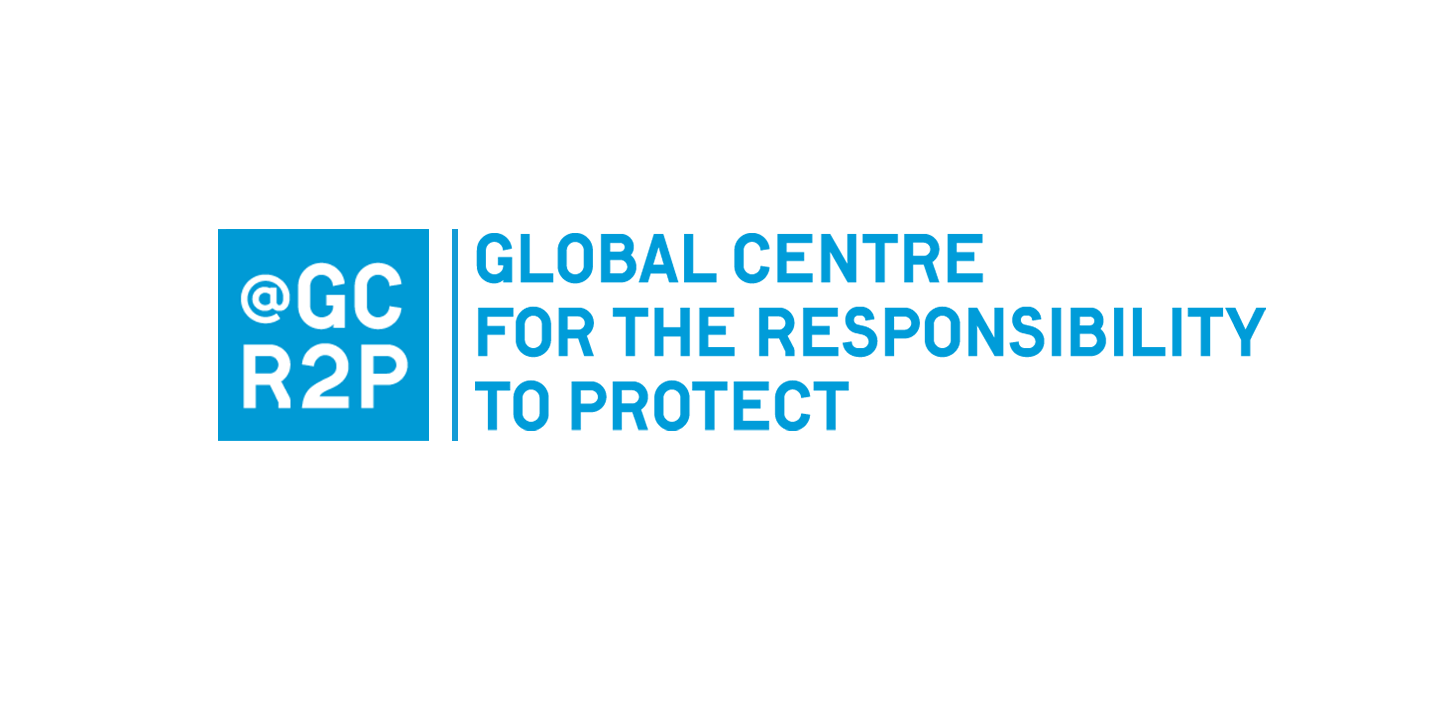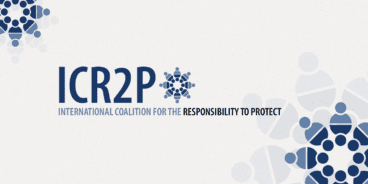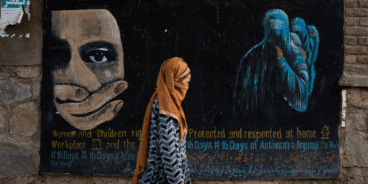

Global Centre for the Responsibility to Protect Submission for the UN’s New Agenda for Peace
The Global Centre of the Responsibility to Protect would like to commend UN Secretary-General António Guterres for the initiative of developing a New Agenda for Peace, which provides an important opportunity to recalibrate multilateral approaches to conflict prevention and resolution, as well as to promote human rights and gender equality – all themes that are closely linked to the Responsibility to Protect populations from genocide, war crimes, crimes against humanity and ethnic cleansing.
The New Agenda for Peace provides a unique opportunity for the UN to enhance its toolbox to prevent outbreaks and escalation of hostilities and to ensure that approaches to prevention, response and resolution do not remain siloed. As the report on Our Common Agenda noted, in order to protect and manage global peace, we need to understand the underlying drivers and systems of influence that are sustaining conflict and invest in meaningful steps to manage emerging risks and a renewed agreement on more effective collective security responses.
As articulated in Our Common Agenda, the New Agenda for Peace should be focused on strengthening prevention, understanding key risk factors and addressing all forms of violence. In order for prevention to be effectively strengthened, it must be predicated on appropriate, timely and early action in response to comprehensive early warning. In this regard, effective early warning should be rooted in accurately identifying all factors that pose risks to populations, including the risk factors associated with atrocity crimes, rather than solely focusing on the risk of conflict.
One of the six potential areas for the New Agenda for Peace is “strengthening international foresight and capacities to identify and adapt to new risks.” The Global Centre believes that efforts to strengthen international foresight and invest in prevention would benefit from assessing situations through an atrocity prevention lens. This lens helps in holistically assessing societal structures and patterns of behavior that may precede violations and abuses of human rights, identity-based violence and targeting, or mass atrocities. Such patterns may be missed in assessments that are strictly focused on conflict prevention or human rights promotion. By helping to contextualize the drivers of human rights violations and atrocities, this type of analysis also enables a broader understanding of how root causes and other exacerbating factors give rise to abuses against populations. Such an analysis can also articulate more holistic guidance on the actions that need to be taken at the international, regional and national levels to prevent the perpetration of atrocities and other abuses and better protect vulnerable populations.
Furthermore, in line with the emphasis on putting women and girls at the center of security policy, we acknowledge the contribution the Secretary-General has already made on this subject through his 2020 report on R2P and the Women, Peace and Security agenda and encourage you to carry forward recommendations from that report into the New Agenda. Systematic gender-based discrimination and inequality are risk factors that can intensify the negative effects of identity-based conflict, and potentially contribute to atrocity crimes. Early warning systems should include gender-sensitive analysis and sex-disaggregated data. They should also recognize the crucial role that women in communities at risk can play in improving early warning, and in developing policies to confront the root causes of conflict.
In further developing the New Agenda for Peace, the Global Centre for the Responsibility to Protect respectfully urges the Secretary-General to take the following into consideration:
- Expand thinking beyond existing conflict prevention frameworks and include a focus on specific risks associated with atrocity crimes. Ensure that analysis frameworks reflect the diversity of populations around the world and the intersectional nature of unique risks they face. Atrocity crimes have distinct and unique warning signs, that may be missed when narrowly focusing on conflict prevention. For example, the one-sided focus on conflict prevention and democracy promotion in Myanmar proved insufficient to identifying the warning signs of and taking action to halt the genocide against the Rohingya community and other minority groups in 2017. In Cameroon, the Anglophone crisis tends to be framed as an armed conflict between the government and armed separatist groups, but it is a significant human rights emergency where civilian populations are the primary target of atrocities. The situation in the Sahel has been confronted through the lens of counter-terrorism, but the multi-dimensional crisis instead involves a broad range of widespread and systematic atrocities with deep-seated root causes beyond violent extremism. In this context, the UN Framework of Analysis for Atrocity Crimes should be better leveraged to ensure the effectiveness of the New Agenda for Peace. Moreover, as the UN takes steps to leverage different forms of analysis and better include a gendered lens, it must do so with respect to the intersectional nature of risks to populations, where individuals are targeted with particular abuses not just because they are women or men or children, but because they are Hazara women, or Fulani men, or LGBTQI youth, etc.
- Recognize that blatant violations of International Humanitarian Law and International Human Rights Law are key drivers of protracted conflicts and atrocities. Violations of international humanitarian law and human rights law have become a regular repugnant feature of armed conflicts and are commonly used as a deliberate strategy to intentionally target civilians and civilian objects. This trend is proliferating because of the international community’s alarming inability to hold perpetrators accountable and deter continued violations. To make the New Agenda for Peace effective, the growing disregard for the rule of law and persistent impunity needs to be addressed as key driver of recurrent and protracted conflict and instability globally.
- Reinforce linkages between the UN’s three pillars and continue to break silos within the UN system. This includes utilizing tools for the protection of human rights to inform discussions of international peace and security and similarly better operationalizing tools for the maintenance of peace and security in the protection of human rights. The UN system’s siloed approach to issues of human rights, peace and security and atrocity prevention often inhibits crucial information and early warning to be shared with all relevant UN departments and bodies, including the Security Council and General Assembly. Effective prevention of atrocities can only be achieved if the UN system responds holistically by using all the tools and mechanisms at its disposal and ensuring that all relevant information and capacities generated by all parts of the UN are shared and acted upon. Greater cross-departmental collaboration, including partnerships between the UN Office on Genocide Prevention and the Responsibility to Protect and other UN bodies, will contribute to enhancing the UN’s collective capacity to prevent atrocity crimes, or halt their occurrence.
- Ensure the voices of civil society organizations, affected communities, human rights defenders and victim and survivor groups are centered in the New Agenda and its implementation. These actors are often the first to witness indicators of conflict and/or atrocities and are thus frequently the primary preventers and responders. The expertise of civil society actors has proven to substantively inform discussions among policy- and decision-makers in relation to conflict prevention and upholding the Responsibility to Protect, particularly with regards to articulating needs and priorities of communities directly affected by ongoing atrocities. If we continue to make policy in New York, Geneva, and capitals that is devoid of the perspectives of those most affected by conflict, the international community will continue to miss key warning signs, lack a nuanced understanding of opportunities for response, and fail to address the diversity of risks and grievances confronting those we are meant to protect.
- Emphasize the importance of investing in justice and accountability for past atrocities as an effective way to contribute to the deterrence of future conflict and atrocities. The Global Centre strongly believes that ending impunity for mass atrocity crimes through criminal investigations and transitional justice processes can help deter future mass atrocity crimes. For victims and survivors, recognition of their suffering and accountability for violations and abuses perpetrated against them can have immense restorative value. Accountability for atrocity crimes is not only punitive, it is preventive. Holding the perpetrators of atrocities legally accountable for their crimes can play a crucial role in inhibiting the recurrence of these crimes.

